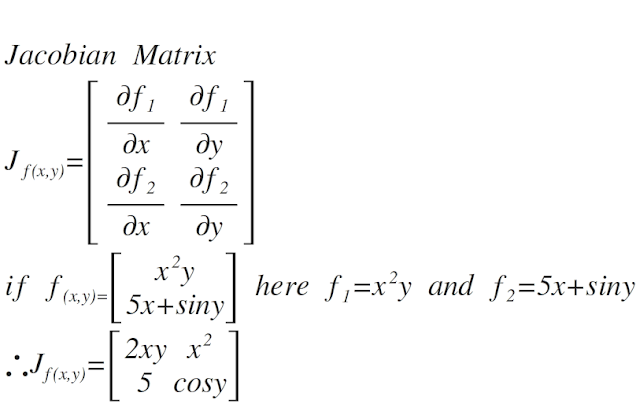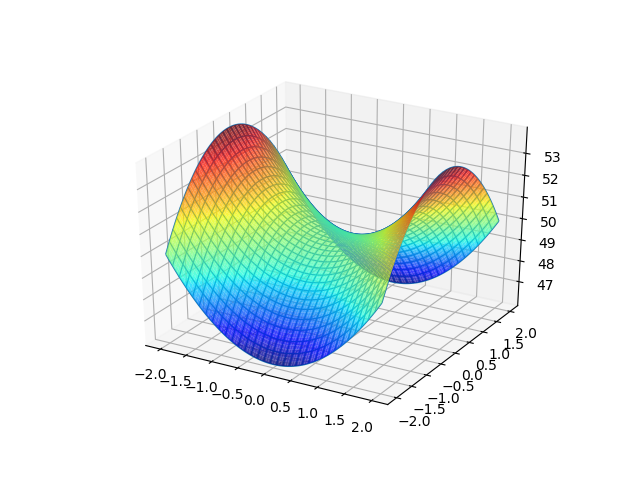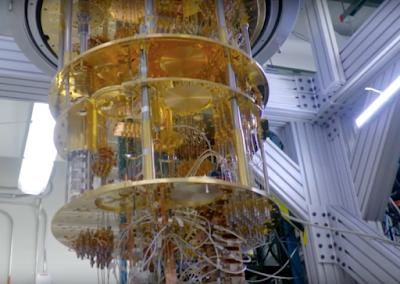Plus1 Numericals Chapter2
Motion In a Straight Line
2.1) A car starts from A and covers a distance of 30 km and reaches B and then covers a distance of 50 km and reaches C find the distance covered and displacement of the car at the end of the journey?
Here AB=30 km and BC=50 km
By Pythagores theorem
AC=√(BC2-AB2)
AC=40 kmDistance covered =30+50=80 km
but displacement is only 40 Km
2.2) A stone is thrown vertically up with a velocity of 19.6m/sec find the maximum height reached and time to reach the ground?(g=9.8m/sec)
u=19.6m/sec
v=0 (at max height the final velocity is zero)
v=u-gt(thrown up ie against gravity)
0=19.6-9.8×t
. . . t=2 sec
since time of flight of upward journey=time of flight of downward journey
time to reach the ground =2 ×2sec=4 sec
Let the Max height=h
S=ut + ½ at2
h=0- ½ g × t2
h=9.8 × 2
h=9.8 × 2=19.6 m
. . . Maximun height reached=19.6 m
2.3) If the position time relations is given by the expression x(t)=2t3+ 5t2 then find the velocity and accelaration at t=2 sec also comment is the velocity of the particle zero at any instant
velocit v =dx/dt
v=d(2t3+ 5t2)/dt
v=6t2+10t
Velocity at t=2 sec
v=6×4+10×2
velocity=24+20=44 units
accelaration=d2x/dt2=dv/dt
= 12 × t+10
at t=2 sec
accelaration=24+10=34 units
If velocity=0 then
6t2+10t=0
ie t(6t+10)=0
ie at t=0 or 6t+10=0
6t=-10
t=-10/6
Since time can not be negative . . . velocity is zero at t=0 ie at the start only
2.4) Show that the average speed of a body which covers first half of distance with speed v1 and second half with a speed of v2 is given by the relation 2v1v2/(v1+ v2)
average speed= total distance covered / total time taken
let the total distance be 2x
then time to cover the first half= x/ v1
then time to cover the second half= x/ v2
average speed= 2x /[(x/ v1)+(x/ v2)]
=2 v1 v2 / (v1+ v2) ( you can use this formula while solving problems)
2.5) Two parallel railway tracks run north-south Train A moves north with a speed of 54 kmph and train B moves with a speed of 90 kmph what is the
a) velocity of B with respect A
b) velocity of ground with respect to B
c) velocity of monkey running on the roof of the train A against its motion with a velocity of 18 kmph=5m/sec with respect to A as observed by a man
standing on the ground?
Towards North is taking as positive then VA= +54 kmph=(5/18) ×54=+15 m/sec
then towards South will be negative ie VB= -90 kmph= (5/18) ×-90= -25 m/sec
. . . velocity of B with respect A ie VBA =VB- VA=-25-15=-40 m/sec
velocity of ground with respect to B =0- VB=0-(-25)=+25 m/sec
Here
VMA=VM - VA=-5
VM=-5+15=10 m/sec ie velocity of monkey=10 m/sec towards North
2.6) If the Velocity-Time graphs of two particles makes an angle of 300 and 450 with x-axis then what is the ratio of their accelaration
We know that the slope of Veloctiy -Time graph is the accelaration and slope is tanθ
a1/a2=tan30/tan45
ie ratio of their accelaration=√3:1
2.7) If the Position-Time graphs of two particles makes an angle of 300 and 450 with x-axis then what is the ratio of their velocities
We know that the slope of Position- Time graph is the velocity and slope is tanθ
v1/v2=tan30/tan45
ie ratio of their velocity=√3:1
2.8) The Position X (in metre) and time t(sec) are related as X=4t + 5 then find the velocity and accelaration of the particle
velocity ,V is dX/dt =d( 4t + 5 )/dt=4 m/sec
accelaration is dV/dt=d(4)/dt=0 m/sec2 ie it is moving with a uniform velocity
2.9) A train moving at 100kmph crosses a cyclist moving at 10 kmph in the same direction of the train in 12 sec calculate the length of train
Since the direction of both body the same relative velocity =100-10=90 kmph=25 m/sec
Length of the train is the distance covered by the train in 12 sec=12×25=300 m
2.10) A trian crosses, two cyclist moving in the same direction of trian at 10 kmph and 15 kmph , in 10 sec and 12 sec respectively calculate
the speed and length of the train
Let S kmph be the speed of the train
Relative velocity of train with respect to cyclist1 =(S-10)×(5/18) m/sec
Relative velocity of train with respect to cyclist2 =(S-15)×(5/18) m/sec
Length of train is equal to the distance to cross the cyclist1 , L=(S-10) ×(5/18) ×10 sec -------(1)
Length of train is equal to the distance to cross the cyclist2 , L=(S-15) ×(5/18) ×12 sec -------(2)
. . . (S-10) ×(5/18) ×10=(S-15) ×(5/18) ×12
. . .S=40 kmph
Substituting the value of S in (1)
L=83.33 m
2.11) A car travels at a spped of 20 m/sec for 10 seconds and 30 m/sec for next 15 seconds what is its average speed?
If a particle travels with speed of u for for a time interval of t1sec and v for a time interval of t2sec
Average speed=(ut1+ v t2) /( t1+ t2)
. . .Average speed=(20×10+30×15 )/ (10+15)=26 m/sec
2.12) A baloon is rising up vertically with a velocity of 30 m/sec. A small body released from it reaches the ground 12 sec after it is dropped
Find the height from which the body was released also calculate after what time its velocity is zero and find the velocity when it touches the ground
i) the body is dropped from a moving baloon so its initial velocity , u=-30 m/sec (since the baloon is moving up)
t=12 sec and a=g= 9.8 m/sec2
S=ut + ½ at2
=-30 × 12 + ½ (9.8) × 144= 345.6 m
height=345.6 m
ii) v=u+at
0=-30+9.8 × t
t=30 / 9.8=3.1 sec
. . . the velocity of the body is zero after 3.1 sec from its fall
iii) v=u+at
v=-30+9.8×12=87.6 m/sec
. . . the velocity of the body while reaching the ground is 87.6 m/sec
2.13) Two towns A and B are connected by a regular bus service with a bus leaving either direction in every T minutes. A man cycling with a speed of
20 kmph in the direction A to B notices that a bus goes past him every 18 min in the direction of his motion and every 6 min in the opposite direction.
What is the period T of the bus service and with what speed do the buses ply on the road?
Let the speed of the bus=v kmph
Speed of the cyclist=20 kmph
Relative speed of bus going from A to B with respect to cyclist=v-20 kmph (same direction)
Relative speed of bus going from B to A with respect to cyclist=v+20 kmph (moving in opposite direction)
Let the distance between A and B =x km
Given that in T / 60 hr it covers a distance of 2x km
2x /v-20=Time for passing the cyclist=18/60-----------------(1)
2x /v+20= 6/60----------------------------------------------(2)
eqn (1) by (2)
(v-20)/(v+20)=6/18=1/3
v=40 kmph
substituting in (1) for v then 2x= 6 km but 2x=vT / 60
ie 6=40T / 60
. . . T=360/40 min=9 min
2.14) A ball which is at rest is dropped from a height h metre. As it bounces off the floor its speed is 80% of what it was just before touching the ground
Then find the height to which the ball rises?
Since it is a free fall , velocity on reaching the ground is √(2gh)
after hitting the ground it moves up with a velocity of 80% of √(2gh)=0.8√(2gh)
final velocity =0 (maximum height)
let the height reached is h'
u2=2gh'
ie 0.64×2gh=2gh'
. . .h'=0.64h
2.15) If the position (in metre)- time relations is given by the expression x(t)=5t2- kt-7 and its velocity after 5sec is 30 m/sec calculate the position at this time
and its initial velocity
velocit v =dx/dt
v=d(5t2- kt-7)/dt
v(t)=10 t - k
Velocity at 5 sec is 30 m/sec
ie 30=10 × 5 - k
k=20
v(t)=10t-20-----------------------------(1)
. . .x(t)=5t2-20t-7
x(5)=5×52-20×5-7=18 m
ie its position in the 5th second is 18 m
it initial velocity ie v at t=0 sec is obtained by
substituting t=0 in equation (1)
v(0)= -20 m/sec
ie its initial velocity is -20 m/sec




Comments
Post a Comment